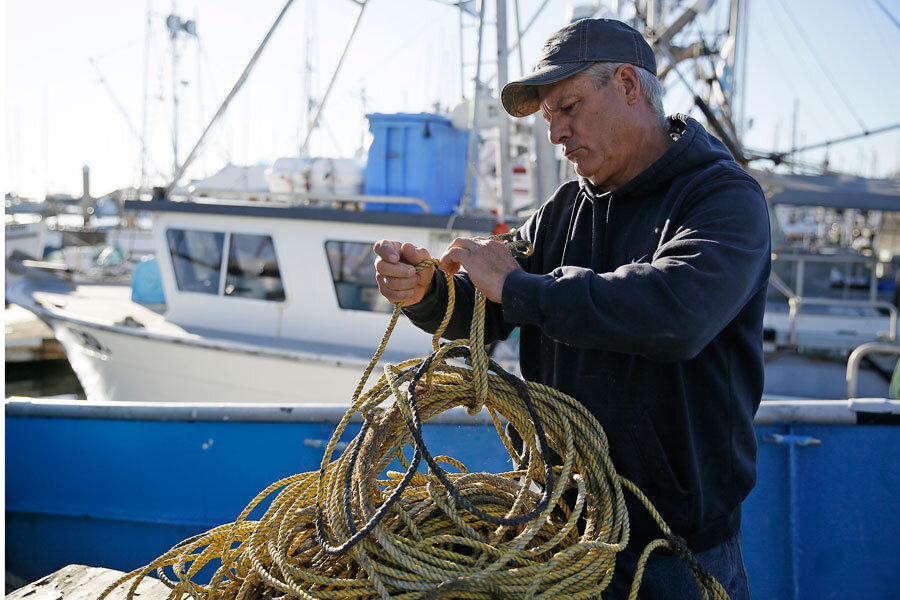Activists and fishermen team up to address record whale entanglement
Loading...
Fishermen have long been at odds with wildlife experts who claim lobster and crab traps are killing whales. And unusually warm waters off the coast of California this year have already caused 60 whales to become entangled in offshore fishing gear.
In response to a 400 percent increase in whale entanglements this year, whale advocates and fishermen teaming up to find solutions that protect both whales and area fishermen whose livelihoods depend on traps in the sea.
Prevention strategies over the last twenty years haven’t done much to help whales and only served to bankrupt the fisherman, says Geoff Shester, California campaign director for Oceana. This time around, wildlife advocates and fishermen are trying a new strategy: cooperation.
“We’ve got pots in the water, we’ve got ropes in the water and we’ve got whales in the water,” crabber Jim Anderson told the Associated Press. “What can we do to make this a safe place for everybody?”
Wildlife experts have turned to realistic solutions that include fishermen in both prevention and in helping to assist animals that do become entangled. At a training session this fall, almost 100 crabbers learned how to photograph tangled whales and “babysit” them until the appropriate authorities arrived.
The crab industry off California has been temporarily postponed because of a massive bloom of toxic algae in the Pacific, but when the season resumes, scientists and fishermen plan to work together to test new types of rope and gear.
As The Christian Science Monitor reported in October, more than 300,000 whales, dolphins, and porpoises die as bycatch every year, either from drowning or from injuries sustained while struggling to escape. But the warm water in 2015 has posed an imminent threat for whales specifically.
“This time of year, the whales would be offshore but with the blob of warm water, they’re right off the beach. They’re right where the crabs are,” Mr. Anderson, who is urging California’s 562 Dungeness crab fishermen to take action, told the Associated Press. “You go talk to a guy who’s been fishing for 40 to 50 years and he’s never seen anything like it.”
In April 2015, The Center for Biological Diversity reported a record number of entanglements off the US Pacific coast. The Center’s report also suggests that entanglement is deadly: of the 30 individual cases referenced in the report, experts believe only seven of the whales survived.
The threat of entanglement isn't exclusive to the Pacific coast. For endangered whale species on the Atlantic coast, the threat is even more dire.
In 2014, Scott Kraus, a leading researcher on endangered North Atlantic right whales, suggested changing the color of rope used in lobster traps.
“We know they can see the ropes,” Dr. Kraus said at the Maine Fishermen’s Forum. “We thought by making them more visible they might be like traffic cones” by warning the whales of danger.” Scientists confirmed that right whales are most likely to respond to orange or red rope, but lobsterman say it’s pointless to use these bright colors because the ropes fade to pink.
“The problem of entanglement of large whales, right whales, in fixed fishing gear is huge,” said Kraus. “It doesn’t seem that way to an individual fisherman. From the whale’s perspective it’s a daily occurrence.” Experts estimate only 450 right whales still exist, and more than 80 percent of these whales show evidence of being entangled at one time.
This report contains material from Reuters and the Associated Press.








